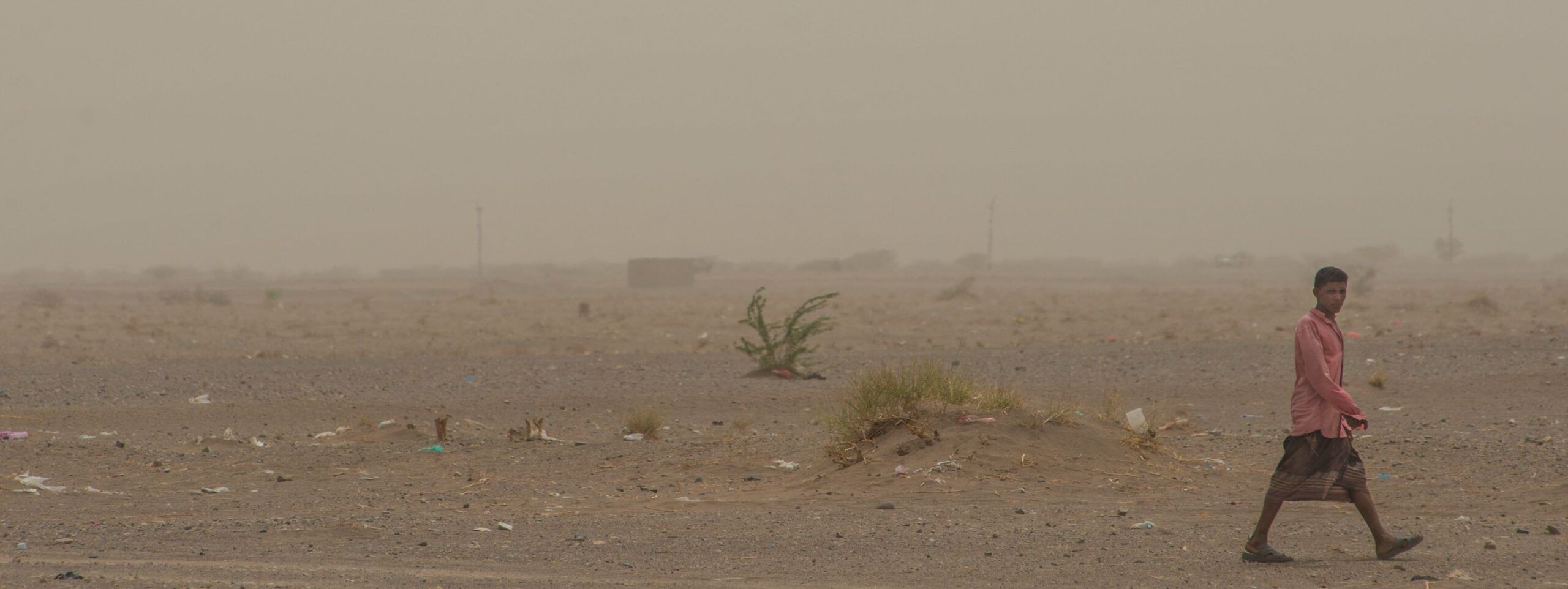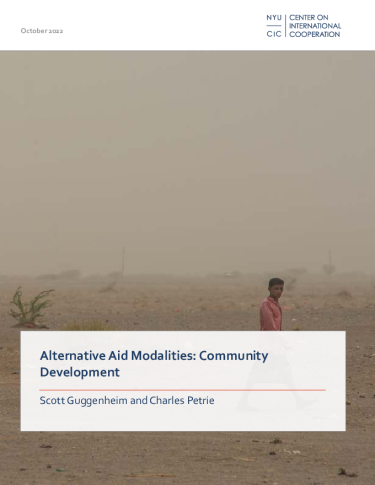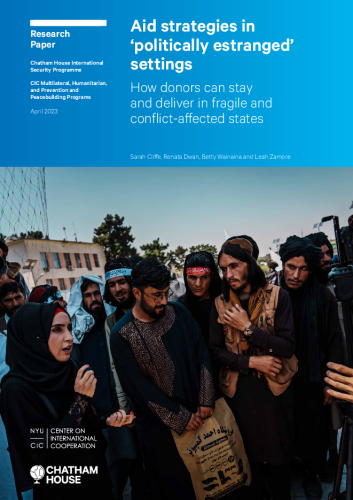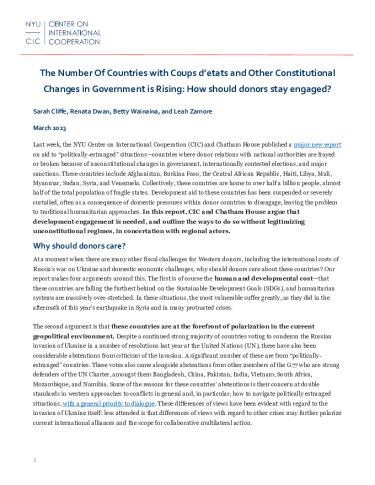Economic sanctions and restrictions on development aid in fragile and conflict-affected states have become an increasingly prominent part of the international toolkit for dealing with regimes that violate international norms and rules or are beset by conflict. However, there is a well-known problem: sanctions and cessations of development aid often end up hurting the poor more than the rich, particularly the political elites who the sanctions are most meant to target.
Donors try to limit the impact of sanctions on the poor through humanitarian assistance, usually run by United Nations (UN) agencies and non-governmental organizations (NGOs). However, in all but the smallest countries, this is extremely expensive as well as a major organizational and logistical challenge. Most recently, situations such as those in Myanmar and Afghanistan have thrown the spotlight on the complexity of the discussion.

In a world of no first-best solutions, a close look at empirical experience will show (provided certain pre-conditions can be met) that donors can partially bridge the challenge of simultaneously upholding human rights values and protecting the poorest from the economic fallout caused by sanctions. These solutions require close attention to unpacking complex environments and using a difficult-to-wield set of tools spread over diplomacy, economic power, and development aid. While not all risks can be eliminated, a variety of flexible tools already exists so that donors can help the poor in sanctioned and conflict-affected countries without undermining diplomatic goals of shunning the government elites or inadvertently financing insurgencies.
With a growing number of donor-funded community programs in fragile or conflict-affected states, there are also donor concerns about legitimating national authorities, risks of financial diversion, and capture by armed combatants or local elites (full list of major concerns listed below). This paper highlights and addresses these concerns in detail and offers a series of recommendations, which in addition to good donor program design and management could mitigate some of the risks (but not fully eliminate them).
This paper aims to present a case on how to use one tool—community-based approaches for delivering and monitoring aid—in fragile or sanctioned contexts, as community-based local governance type development models have been used successfully in a variety of fragile, conflict, and sanctioned countries. Additionally, this paper will extract real-world illustrations of how these approaches can address donor concerns on providing post-humanitarian aid to poor people without unintentionally undermining sanctions on illegitimate regimes. Because the case literature on delivering aid under sanctions is small, the brief includes illustrations taken from aid delivery in conflict-affected countries, where governments may not be under sanction, but deep concerns remain about aid capture or aid further fueling conflict. Finally, in addition to selections from the literature, the report draws from the personal and professional experiences of the two authors, who have overseen or managed large-scale community-type humanitarian, peacebuilding, and development programs in Afghanistan, Burundi, East Timor, Gaza, Indonesia (including Aceh and West Papua), Myanmar, Rwanda, Sri Lanka, and Syria, and have been part of discussions over development options for countries under sanction in Ethiopia and Sudan.
In this paper, authors propose ten recommendations for donors coming out of this research on how they can incorporate community-driven approaches for aid in sanctioned and fragile states situations.



